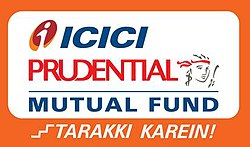Gilt Debt Fund

1Y
3Y
SI
Nav
Risk

1Y
3Y
5Y
SI
Nav
Risk

1Y
3Y
5Y
SI
Nav
Risk

1Y
3Y
5Y
SI
Nav
Risk

1Y
3Y
SI
Nav
Risk

1Y
3Y
SI
Nav
Risk

1Y
SI
Nav
Risk

1Y
3Y
SI
Nav
Risk

1Y
3Y
SI
Nav
Risk

1Y
3Y
5Y
SI
Nav
Risk
A Gilt Debt Fund is a type of debt mutual fund that invests exclusively in government securities (G-Secs) issued by the Reserve Bank of India (RBI) on behalf of the Government of India. These funds carry zero credit risk as they are backed by the government, making them one of the safest debt instruments in terms of default risk.
Gilt Funds typically invest in medium- to long-duration government bonds, with maturities ranging from 5 years to 30 years. Due to their extended duration profile, gilt funds are susceptible to interest rate fluctuations. This means they can deliver attractive returns during periods of falling interest rates, but may experience short-term volatility if interest rates rise.
Who Should Consider This Fund
Gilt Debt Funds are best suited for risk-averse investors who want to avoid credit risk but can tolerate some level of interest rate risk. These funds are ideal for individuals with a medium- to long-term investment horizon (typically 3–5 years or more) who are comfortable with NAV fluctuations caused by interest rate movements.
They are also suitable for investors who believe that interest rates are likely to decline, as gilt funds benefit significantly from falling yields. Since the underlying instruments are sovereign bonds, investors can be assured of capital safety from a default perspective, making these funds an attractive option for conservative investors seeking higher returns than fixed deposits, especially over the long term.
Risks and Return Potential
Gilt Funds carry virtually no credit risk, but they are vulnerable to interest rate risk due to their exposure to long-term government securities. When interest rates fall, the value of these bonds rises, resulting in capital gains for the fund. Conversely, rising rates may lead to a short-term erosion of NAV.
The return potential for Gilt Funds typically ranges between 6.5% to 8.5% annually, depending on macroeconomic conditions and monetary policy trends. They perform best when the RBI adopts an accommodative stance and yields decline.
For taxation, like other debt funds, Short-Term Capital Gains (STCG) are taxed as per the investor's income slab if the securities are held for less than three years. Long-term capital gains (LTCG) on assets held for over three years are taxed at 20% with indexation benefits.
Benefits of Gilt Debt Funds
The main advantage of Gilt Funds is their credit safety. Since these funds invest solely in government securities, the risk of default is virtually nonexistent. Such funds are managed by experts who adjust the maturity profile in response to changes in interest rates, thereby allowing investors to benefit from fluctuations in the interest rate market.
In addition, they experience complete transparency and adhere to regulated business practices with disclosures about holdings and maturity being readily available. People who want the safety of their capital and also seek returns higher than traditional fixed income options (in a favorable interest rate environment) may consider the alternative of gilt funds.
Things to Keep in Mind Before Investing
Though Gilt Funds protect from credit defaults, investors must be aware that changing interest rates may cause NAV volatility. A minimum tenure of 3–5 years is recommended to not only cushion the volatility but also enjoy the full benefits of the rate cycle.
Moreover, it should be noted that in the event of interest rate hikes, the securities in the gilt fund, which are intended for the long term, may become less valuable and therefore yield returns that are lower than expected if the investments were made over a short period. To time the market, keeping an eye on macroeconomic indicators and RBI policy can be beneficial for those who want to invest in a gilt fund altogether.
Get In Touch
Interested in exploring more about JezzMoney Mutual Fund Distributors Software? Submit the form, and we will respond quickly.
Get Expert Advice on Investment in Mutual Funds!
- Certified mutual fund distributors around India will reach out to help you build your future.
- Connect with trusted mutual fund distributors and find them from your city and pincode area.
- JezzMoney is only the mediator to help you connect with these certified professionals.
- It is your obligation to gather accurate information when you receive contact from our platform.